- Like
- SHARE
- Digg
- Del
- Tumblr
- VKontakte
- Flattr
- Buffer
- Love This
- Save
- Odnoklassniki
- Meneame
- Blogger
- Amazon
- Yahoo Mail
- Gmail
- AOL
- Newsvine
- HackerNews
- Evernote
- MySpace
- Mail.ru
- Viadeo
- Line
- Comments
- Yummly
- SMS
- Viber
- Telegram
- JOIN
- Skype
- Facebook Messenger
- Kakao
- LiveJournal
- Yammer
- Edgar
- Fintel
- Mix
- Instapaper
- Copy Link
Introduction
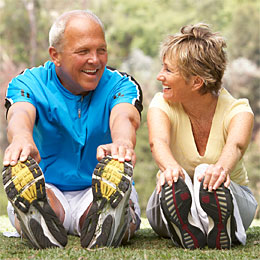
Physiological changes due to the aging process are often taken to be a necessary evil of growing older. However, research has shown that exercise, especially strength training, can slow down and even reverse some effects of the march of time.
Many people erroneously believe that aging inevitably leads to degeneration and a loss of functionality. This simply isn’t true! Many of the affects of aging which are assumed to be related to age itself are actually products of inactivity. The old saying “use it or lose it” holds very true regarding age and physical ability.
Of course, certain changes do happen to the body as time goes on, however, these changes often lead to a downward spiral. Due to certain age-related changes, and indeed negative age-related stereotypes, one may begin to lose confidence and becomes less and less active, quickly compounding many effects of aging which could be slowed or even reversed with the right exercise program. According to the National Academy of Sports Medicine and many other authoritative sources, in the vast majority of cases, the right exercise program for seniors should include a resistance training component.
Continue reading to learn about the health benefits of strength training for seniors, age-related physiological changes and how exercise may make them easier to bear, common health conditions to look out for when beginning an exercise program, sample exercises that are great for seniors’ strength training programs, and where to find senior strength training programs near you.
What Is Strength Training?
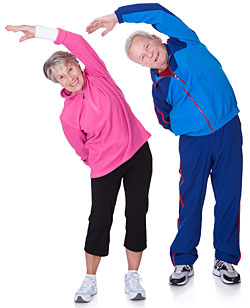 Strength training, also known as weight training, resistance training, or simply weight lifting, refers to any exercise which has the goal of encouraging the body to adapt to challenges placed upon it by becoming stronger. Certain modes of strength training add an additional focus on muscular endurance, and at more advanced levels, muscular power, or the ability to generate force at the highest rate of speed.
Strength training, also known as weight training, resistance training, or simply weight lifting, refers to any exercise which has the goal of encouraging the body to adapt to challenges placed upon it by becoming stronger. Certain modes of strength training add an additional focus on muscular endurance, and at more advanced levels, muscular power, or the ability to generate force at the highest rate of speed.
Different forms of resistance are used in strength training, including but not limited to bodyweight, dumbbells, barbells, cable machines, resistance bands, and medicine balls. If you would like to learn more about the concepts behind strength training, including sets and reps, weight training volume, and more, we have a large section of articles devoted to all aspects of strength training.
Health Benefits of Strength Training for Seniors
According to the Center for Disease Control, the health benefits of strength training generally greatly outweigh the risks. Many older adults cite that a fear of injury and fear of instigating a heart attack keep them from pursuing an exercise program. These events are unlikely if you receive a doctor’s clearance prior to beginning exercise, exercise with the proper technique, and follow the right exercise program for your own body with its unique strengths and limitations.
Many of the health benefits of strength training for seniors are the same benefits enjoyed by people of any age who commit to a strength training program.
These benefits include:
- Increased lean body mass and reduced body fat
- Gains in strength and endurance
- Improved strength of connective tissue
- Metabolic and hormonal benefits
- Reduction in lower back pain
- Better mood, better sleep, reduced stress, and more
Consider how the above benefits directly address aspects of physical life that often become worse with age and inactivity.
Additional benefits that may be especially interesting to the senior population include:
- Arthritis pain relief
- Increased bone density, combating osteoporosis
- Lowered blood pressure
- Improved cholesterol levels
- Falls become less likely due to increased balance, coordination, and strength
I highly recommend that you seek the help of a personal trainer as you get started with a senior strength training program. Your trainer can teach you how to exercise safely and effectively so you can begin enjoying the health benefits of strength training for seniors as quickly as possible.
Age-Related Physiological Changes
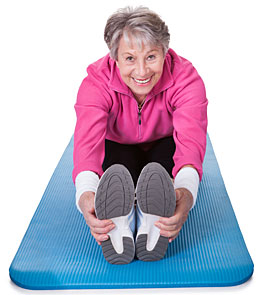
Common age-related physiological changes must be taken into account in senior strength training programs.
Even if you were strong and active earlier on in life, you might be surprised at your body’s changes if you haven’t been active in a while.
These changes, and their training implications, include:
- Reduced muscle mass and bone mass. Start programs slowly with one or two sets of 8 or so exercises using lower weight, adding more sets and higher weight gradually as you become stronger.
- Maximal oxygen uptake, maximal exercise heart rate, and pulmonary efficiency all decrease. Start with short duration workouts (20-45 minutes) with low resistance and add more time and weight slowly as you begin to adapt.
- Balance and neuromuscular control may be impaired. Pay special attention to fall prevention and watch for foot issues. It may be best to start out using exercise machines and progress to more-effective free weight exercises as you get stronger. Include balance training exercises in your routines. Scientific studies and this trainer’s experience both validate the fact that balance and coordination can improve rapidly with training.
Exercises for Senior Strength Training Programs
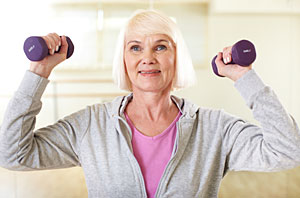 Many strength training exercises that are great for any age group are also great for senior strength training programs. Which exercises are right for you at any give phase of life are more related to mobility and fitness level than age. A great many strength training exercises are just fine for seniors as long as you are generally healthy and have no serious postural issues, musculoskeletal problems, or joint issues. Be sure to start with a light load and training volume, and add more weight and sets/reps slowly as you become stronger.
Many strength training exercises that are great for any age group are also great for senior strength training programs. Which exercises are right for you at any give phase of life are more related to mobility and fitness level than age. A great many strength training exercises are just fine for seniors as long as you are generally healthy and have no serious postural issues, musculoskeletal problems, or joint issues. Be sure to start with a light load and training volume, and add more weight and sets/reps slowly as you become stronger.
Two classic strength training exercises that can work well for most senior citizen exercisers are the dumbbell biceps curl and the dumbbell triceps kickback. These exercises target both major muscles of the upper arm and are great to use together as part of an upper body strength program.
If you have mobility issues or chronic health conditions, have your doctor clear you for exercise before beginning a new program. After you have received your doctor’s approval to do so, it’s most appropriate to contact a personal trainer who can conduct a fitness assessment and design a program that is suitable for your body and fitness level.
Senior Citizen Exercises that are Ideal for Elderly Health
Senior citizens who live in a retirement community in PA have many opportunities to exercise. Older adults can get outdoors to exercise when the weather is nice or exercise indoors when the weather doesn’t cooperate. What matters is getting the heart pumping and the muscles moving to improve elderly health.
These 5 exercises are all safe for seniors who don’t have physical issues that would prevent them from their requirements.
Walking or Hiking is an Exercise Most Seniors Can Participate In
Walking the neighborhood or hiking on an easy, flat trail is a good exercise for most elderly people who still have their mobility. It’s also an inexpensive exercise. All that’s needed are good, supportive walking shoes or sneakers, clothing that’s appropriate for the weather, and some reflective gear if walking in twilight or after dark.
The benefits of walking for senior citizens include weight management, lowering the risk of cardiovascular diseases, preventing osteoporosis and osteoarthritis, and blood pressure management. When walking any distance, it’s always best for a senior to make sure they have their mobile phone with them, and if possible, walk with a partner.
The Health Boosting Benefits of Gardening for Older Adults
Gardening is one of the best exercises for senior citizens. Bending over to plant seeds, care for plants and pull weeds burns calories and strengthen muscles. Being outdoors helps them get a nice dose of Vitamin D, which is beneficial for energy and lessening osteoporosis.
Another benefit of gardening as an exercise for seniors is that it leads to another accomplishment – a beautiful flower bed or healthy vegetables that the gardener can enjoy throughout the growing season.
Swimming Helps Senior Citizens Build Endurance and Flexibility
A senior citizen who has access to a swimming pool has access to many health benefits. Swimming is a low-impact exercise for older adults who need to be careful of their joints. Swimming laps can also be a mood-enhancer as the exercise helps to release endorphins and decrease depression. A good aerobic exercise, swimming helps strengthen the heart.
For seniors who don’t feel comfortable swimming laps, an alternative is water aerobics. These instructor-led group classes take place in the shallow end of a pool. The water creates a natural resistance against body parts, and seniors who take part in water aerobics do strength training without ever having to pick up a weight.
For Recovery from Heart Attacks and Stroke, Older Adults Benefit from Tai Chi
Tai chi is an ancient Chinese martial art that’s much more gentle than karate. It uses slow, thoughtful movements that flow together. Senior Citizens who practice tai chi for just 20 minutes a day can get benefits, and the practice can be done indoors or outdoors.
Some of the benefits of tai chi for older adults include increased balance, reduced stress, alleviation of arthritis pain, and increased concentration. Tai chi is a good exercise for those recovering from a heart attack or stroke, studies have shown. It improves oxygen intake and mental concentration, two things that those in recovery need to focus on.
Senior Citizens Who Practice Yoga Have Increased Flexibility
Yoga is safe for senior citizens who are in otherwise good health. Because those who practice yoga are encouraged to modify yoga poses to meet their abilities, many seniors feel comfortable practicing yoga. Yoga’s biggest benefit is increased flexibility, something many adults lose as they age.
There are additional benefits of yoga for seniors, too. Yoga burns calories and increases strength. It also relieves stress and combats depression.
About the Author
Kelsey Simpson enjoys writing about things that can help others. She lives in South Jersey and is the proud companion to two German Shepherds and spends her free time volunteering in dog shelters.
Where to Find Senior Strength Training Programs
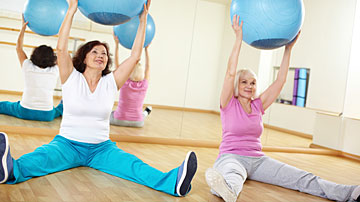 Especially if you’ve never followed a structured exercise program before, or if it’s been a while since you have exercised, it can be intimidating to begin a new program. There is often an uphill battle as you break bad habits that may have been years or even decades as you begin to live a more healthy lifestyle. Remember that it can be done; many others have done it before, and there is support available if you know where to look.
Especially if you’ve never followed a structured exercise program before, or if it’s been a while since you have exercised, it can be intimidating to begin a new program. There is often an uphill battle as you break bad habits that may have been years or even decades as you begin to live a more healthy lifestyle. Remember that it can be done; many others have done it before, and there is support available if you know where to look.
As mentioned above, a great first step is finding a personal trainer who can teach you how to exercise properly and develop a program specific tailored to your body and your goals. Do an online search for personal trainers in your area, or better yet call your local YMCA or other local gyms to discuss the personal training services they offer.
You may enjoy exercising in a group fitness class, which is also a great way to meet like-minded people. Your local YMCA or other gyms may offer group fitness classes designed for older adults, such as Zumba Gold, or classes specifically for senior strength training.
Your health plan may offer the Silver Sneakers program, which can help offset the costs of gym membership. Visit silversneakers.com to see if your health plan participates in the Silver Sneakers program.
Common Health Conditions Affecting Seniors
The following diseases and health conditions are prevalent among the senior population:
- Heart disease
- Hypertension (high blood pressure)
- Peripheral vascular disease
- Diabetes
- Arthritis
- Osteoporosis
- Medication side effects
If you have any of these issues or any other serious health conditions, see your doctor right away. Although exercise can help with many chronic diseases, there are specific important guidelines that must be followed to make sure exercising doesn’t aggravate your condition. Your doctor will need to clear you for exercise before it’s safe for you to begin.
If you choose to exercise with a personal trainer, they will conduct a physical activity readiness screening meant to discover any undiagnosed health conditions. Oftentimes, certain types of exercise may be approved for certain conditions, but you must get a doctor’s clearance first. Some trainers are specially trained to work with older folks with chronic conditions.
Conclusion
It’s my hope that this article has encouraged you to begin a strength training program. I strongly believe that strength training is vital to improved quality of life for people of all ages.
Strength training for seniors is a huge part of senior fitness, but in order to get in the best shape and experience the most health benefits, you must follow an integrated fitness program including components of cardiovascular training, flexibility, balance training, core stability and core strength, and nutrition. A personal trainer is the best resource to help you develop an integrated fitness plan, as they are trained to address all of these components.
Please share this article with other seniors in your life and encourage them to begin their own strength training program. If you’re not yet a senior yourself, consider sharing this article with loved ones and friends who could benefit from a senior strength training program.
About Mae Barraclough
Mae Barraclough, B.S., NASM-CPT, NASM-CES is a certified personal trainer, corrective exercise specialist, and licensed Zumba Instructor. With her passion for health, fitness, and dance, Mae loves learning all she can and sharing her knowledge with others.
